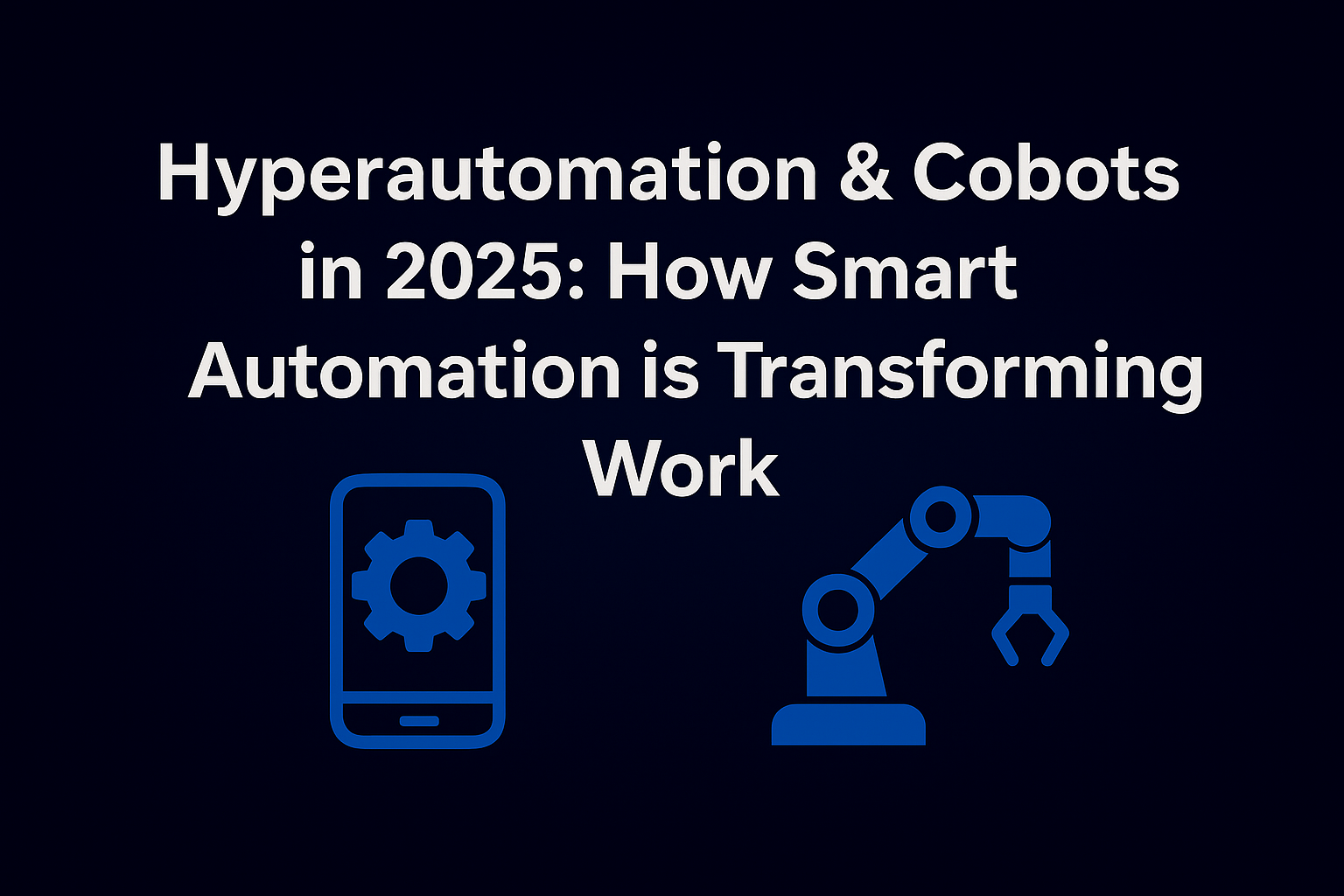Introduction
In the past, robots were seen as machines that replaced human jobs. In 2025, that view is changing. With hyperautomation and collaborative robots (cobots), technology is no longer replacing humans — it’s working alongside them.
Hyperautomation combines AI, machine learning, robotic process automation (RPA), and data analytics to automate everything from customer service to supply chains. Cobots, on the other hand, are robots designed to work safely next to humans, supporting them instead of replacing them.
This powerful mix is transforming workplaces across the USA, from factories to offices, hospitals, and even small businesses.
What is Hyperautomation?
Hyperautomation means automating as many processes as possible using AI, RPA, and advanced analytics. Unlike simple automation, it doesn’t just perform repetitive tasks — it learns, adapts, and improves.
👉 Just as AI keyword research tools predict the best search trends, hyperautomation predicts and optimizes business workflows.
What are Cobots?
Cobots (Collaborative Robots) are robots designed to safely work with humans. Unlike traditional industrial robots that operate in cages, cobots can share the same workspace with people.
Examples include:
- Cobots assisting factory workers in lifting heavy parts
- Hospital cobots helping nurses deliver medicine
- Retail cobots managing stock and assisting customers
👉 Just as digital twin technology creates simulations for industries, cobots create real-time collaboration between humans and machines.
Benefits of Hyperautomation in 2025
- Faster Processes – Businesses complete tasks in seconds instead of hours.
- Cost Savings – Automation reduces labor costs and human errors.
- Scalability – Companies can expand operations without hiring large workforces.
- Improved Customer Experience – AI chatbots and cobots handle requests instantly.
(External Source: Forbes on Hyperautomation)
Benefits of Cobots
- Workplace Safety – Cobots take over dangerous tasks like handling chemicals or heavy lifting.
- Increased Productivity – Humans focus on creative work while cobots handle repetitive tasks.
- Flexibility – Cobots are easy to program and adapt to multiple roles.
- Affordability – Small businesses can now afford cobots as prices drop in 2025.
Industries Using Hyperautomation & Cobots in 2025
A. Manufacturing
Factories use cobots for welding, packaging, and quality checks. Hyperautomation ensures supply chains run smoothly with minimal delays.
B. Healthcare
Hospitals rely on hyperautomation for digital records and cobots for patient care.
👉 Similar to energy-efficient computing, hospitals use smart tech to save both time and energy.
C. Retail
Cobots help manage shelves while hyperautomation powers AI-driven inventory systems.
D. Finance
Banks automate fraud detection, loan approvals, and customer service using AI.
E. Smart Cities
Hyperautomation integrates with IoT devices for energy management, waste collection, and traffic control.
(External Source: Wired on Cobots)
Challenges of Hyperautomation & Cobots
- Job Fears – Many workers worry about being replaced, though cobots are meant to support, not replace.
- High Initial Costs – Investing in advanced systems requires significant capital.
- Cybersecurity Risks – Automated systems must be protected from hackers.
- Skill Gaps – Workers need training to operate and manage cobots effectively.
👉 These challenges are similar to those seen in AI SEO trends 2025, where businesses must adapt quickly to stay competitive.
Future of Hyperautomation & Cobots (2030 Vision)
By 2030, experts predict:
- 70% of all businesses will use hyperautomation.
- Cobots will become as common in homes as smartphones.
- AI-driven automation will handle entire supply chains without human involvement.
- Digital twins and automation will merge, creating “smart factories of the future.”
(External Source: WSJ on Future of Work)
FAQs About Hyperautomation & Cobots
Q1: Are cobots safe to work with humans?
Yes, they are designed with sensors to avoid harming people.
Q2: Is hyperautomation only for large companies?
No, in 2025 even small and medium businesses are adopting affordable hyperautomation tools.
Q3: Will cobots replace all human jobs?
No, they will handle repetitive tasks while humans focus on creative and strategic roles.
Conclusion
In 2025, hyperautomation and cobots are not science fiction — they are everyday reality. From factories and hospitals to retail stores and offices, smart automation is improving efficiency, lowering costs, and enhancing human work.
Instead of replacing humans, cobots are partners. Hyperautomation allows businesses to achieve more in less time, giving them a competitive edge.
The future is clear: in the age of hyperautomation, humans and robots will build the workplace together.
